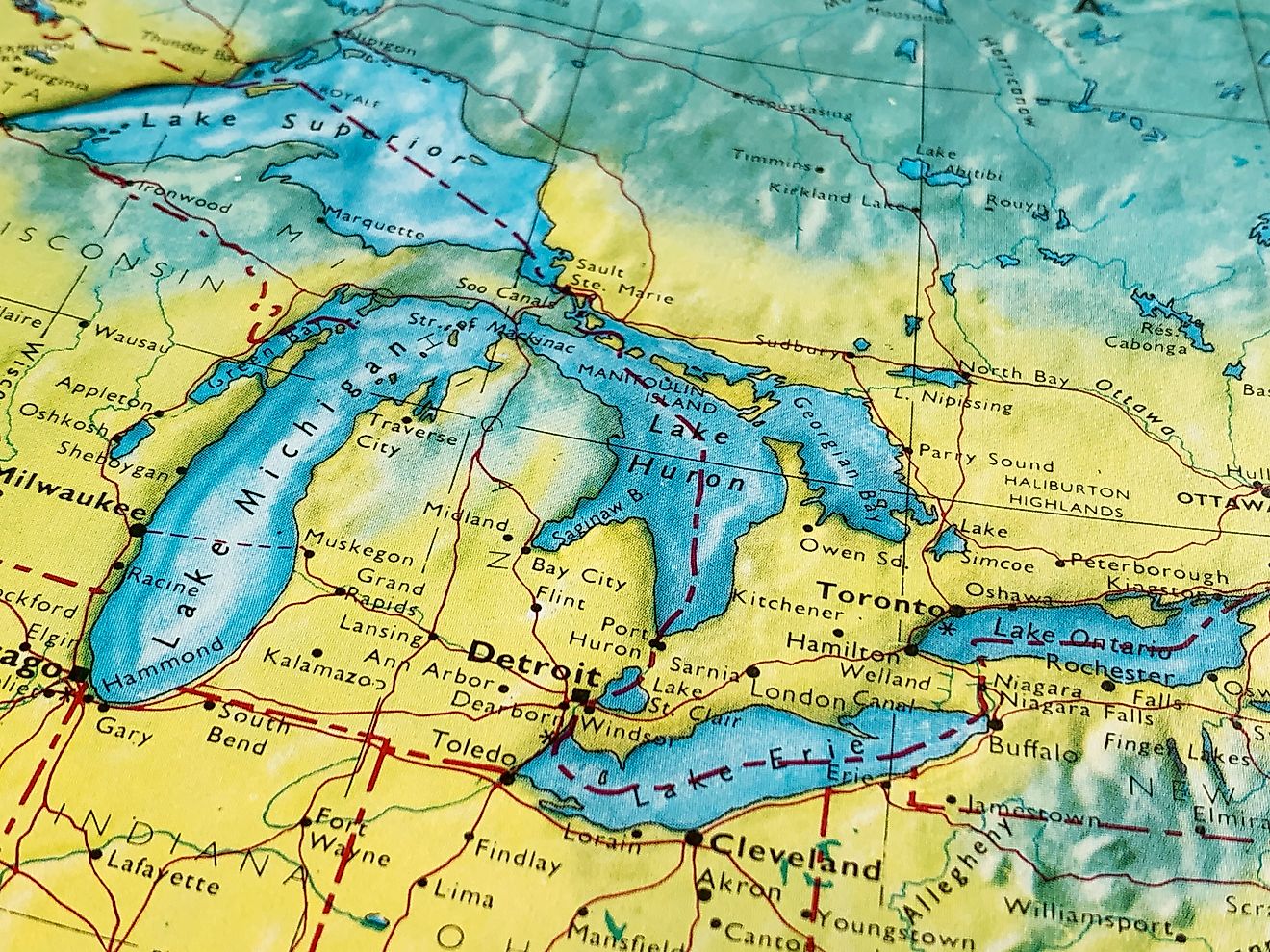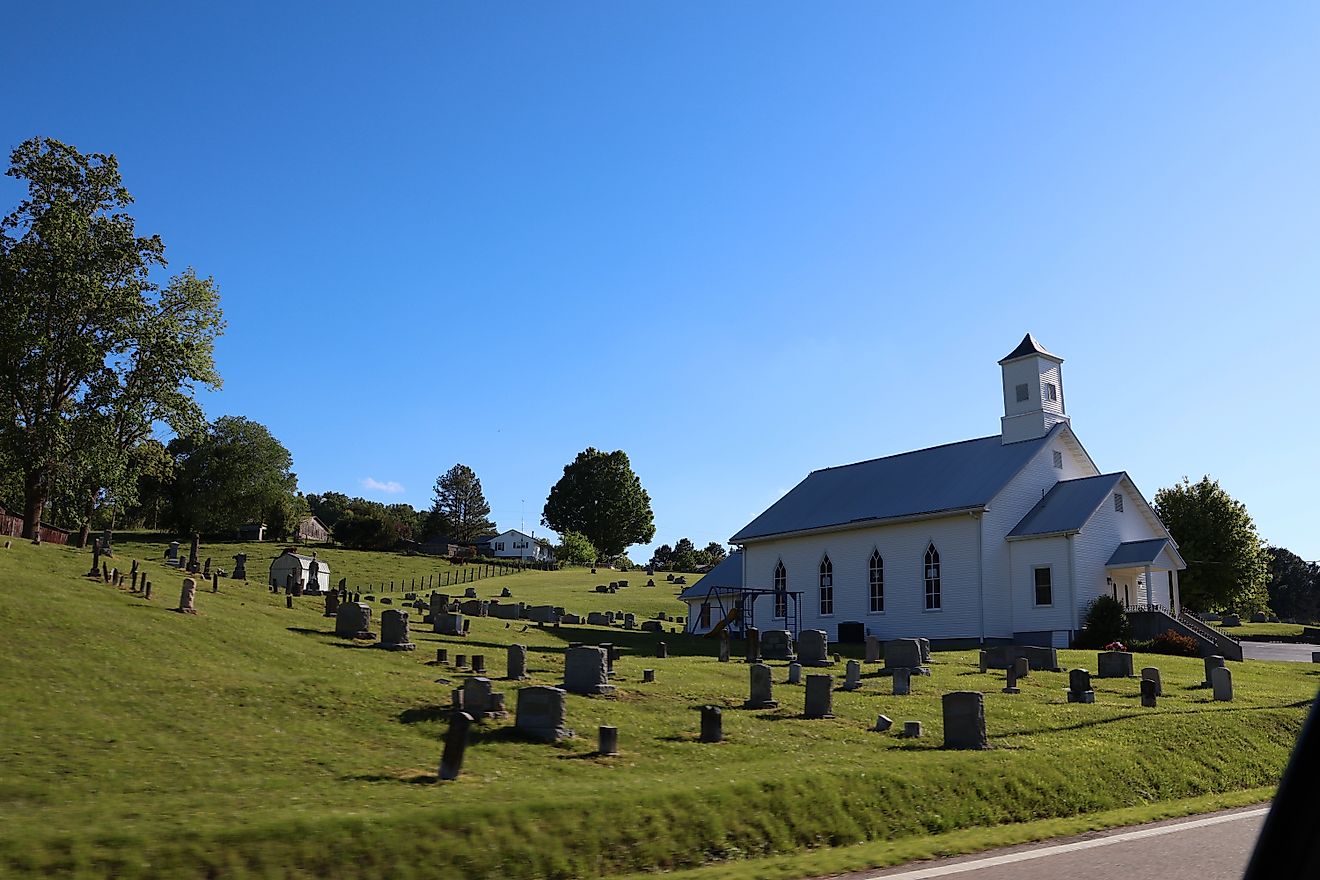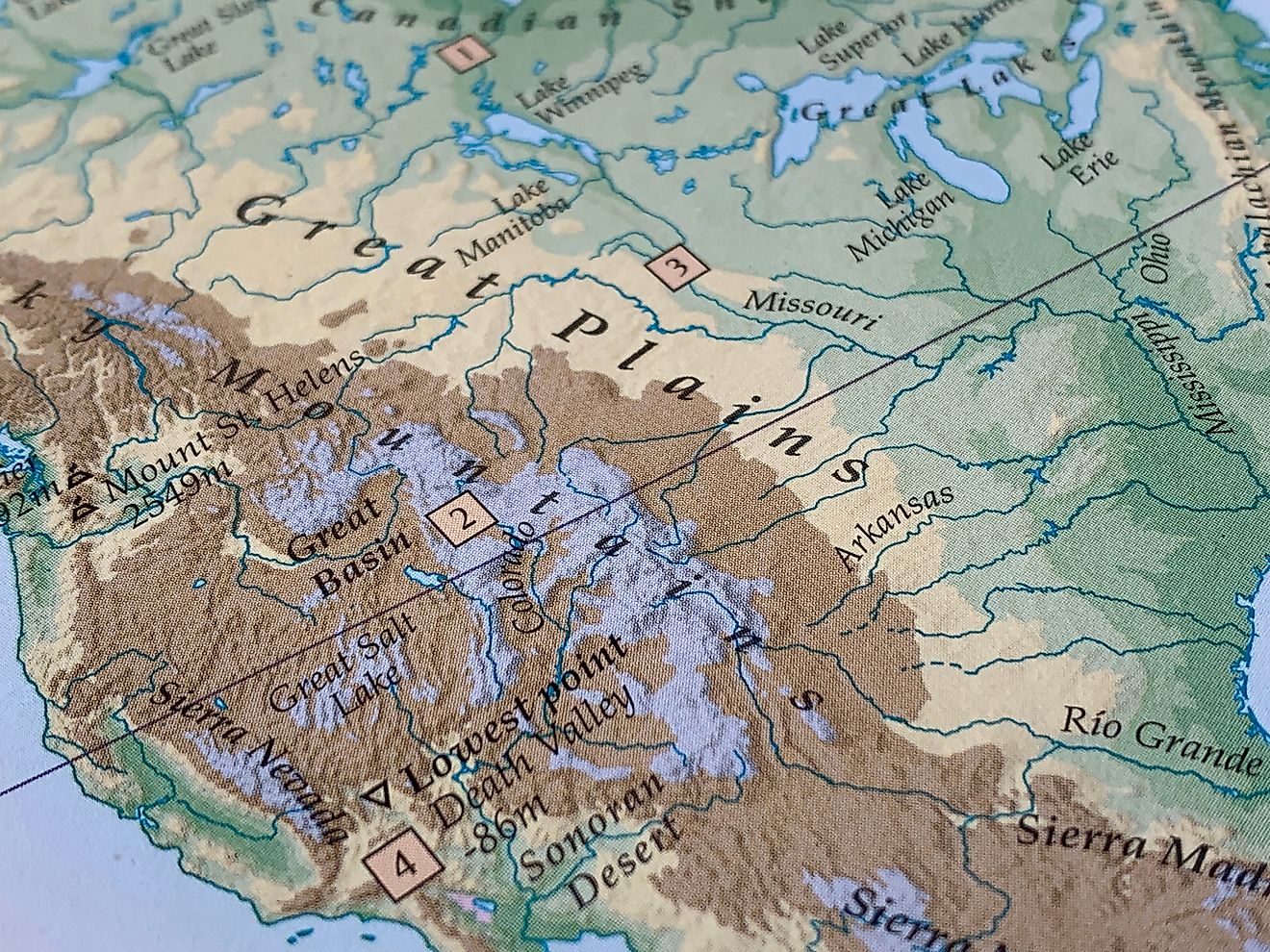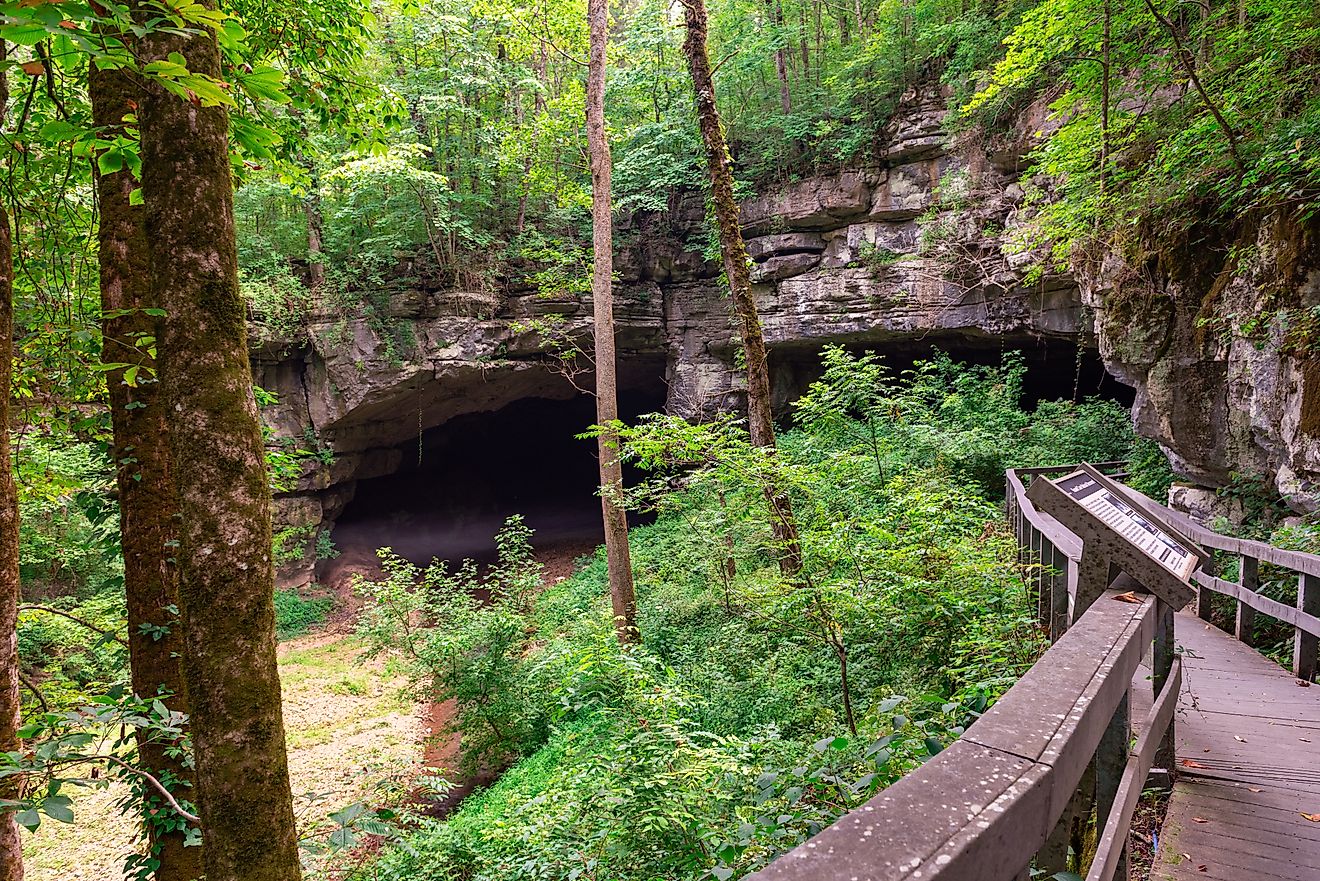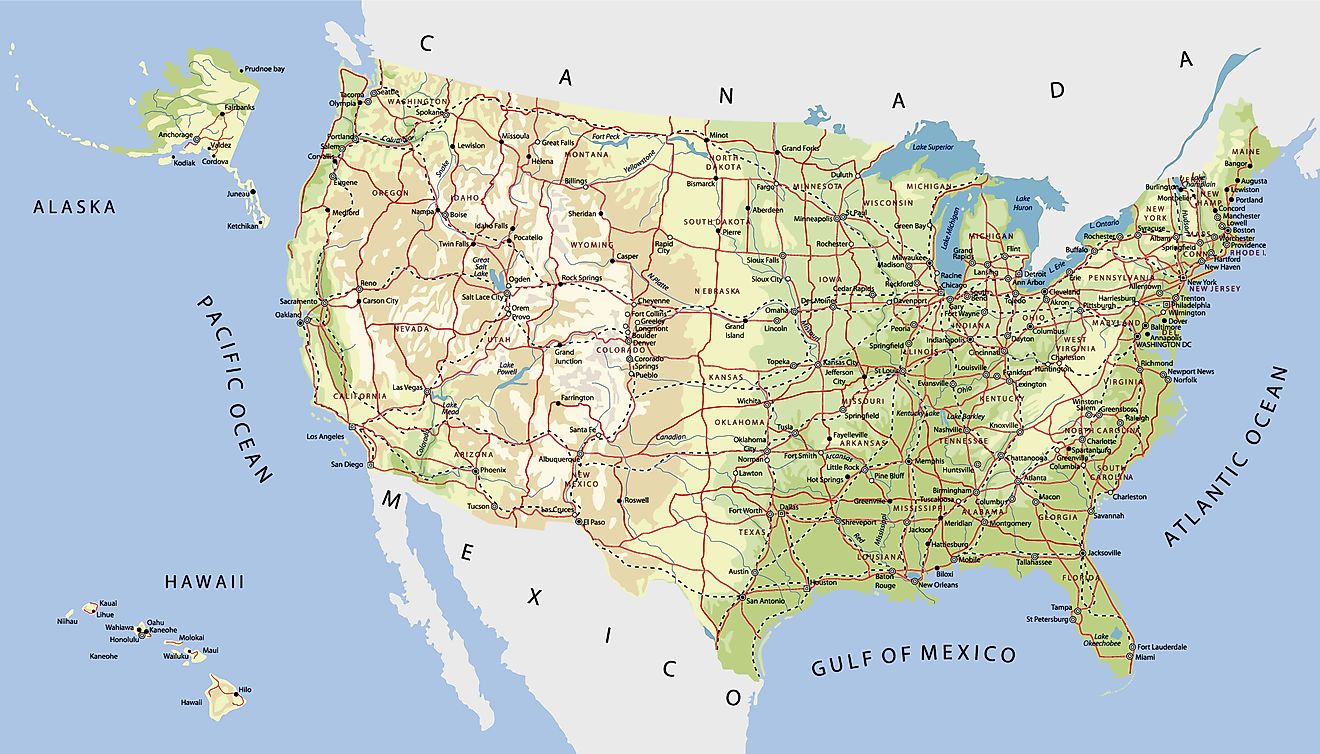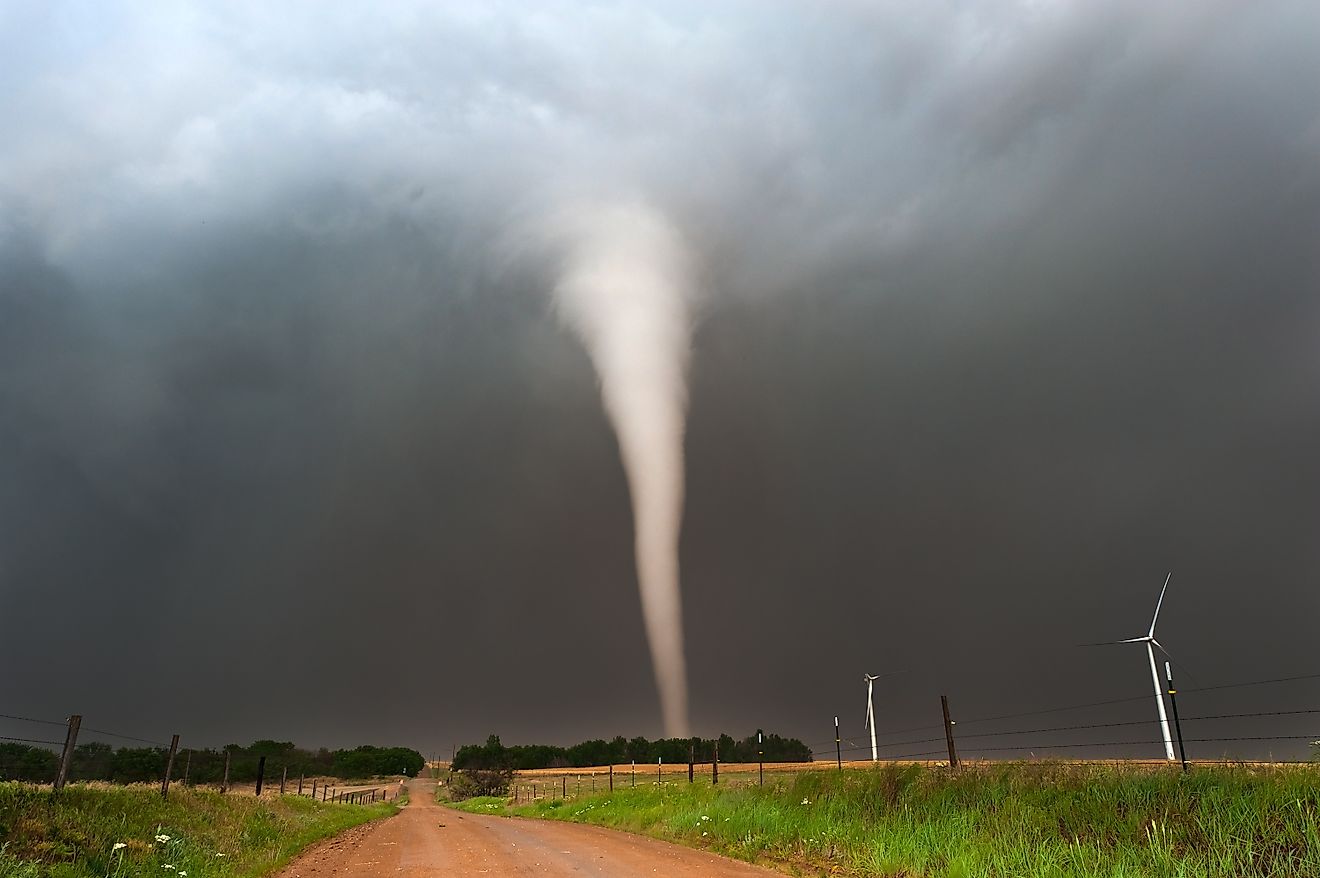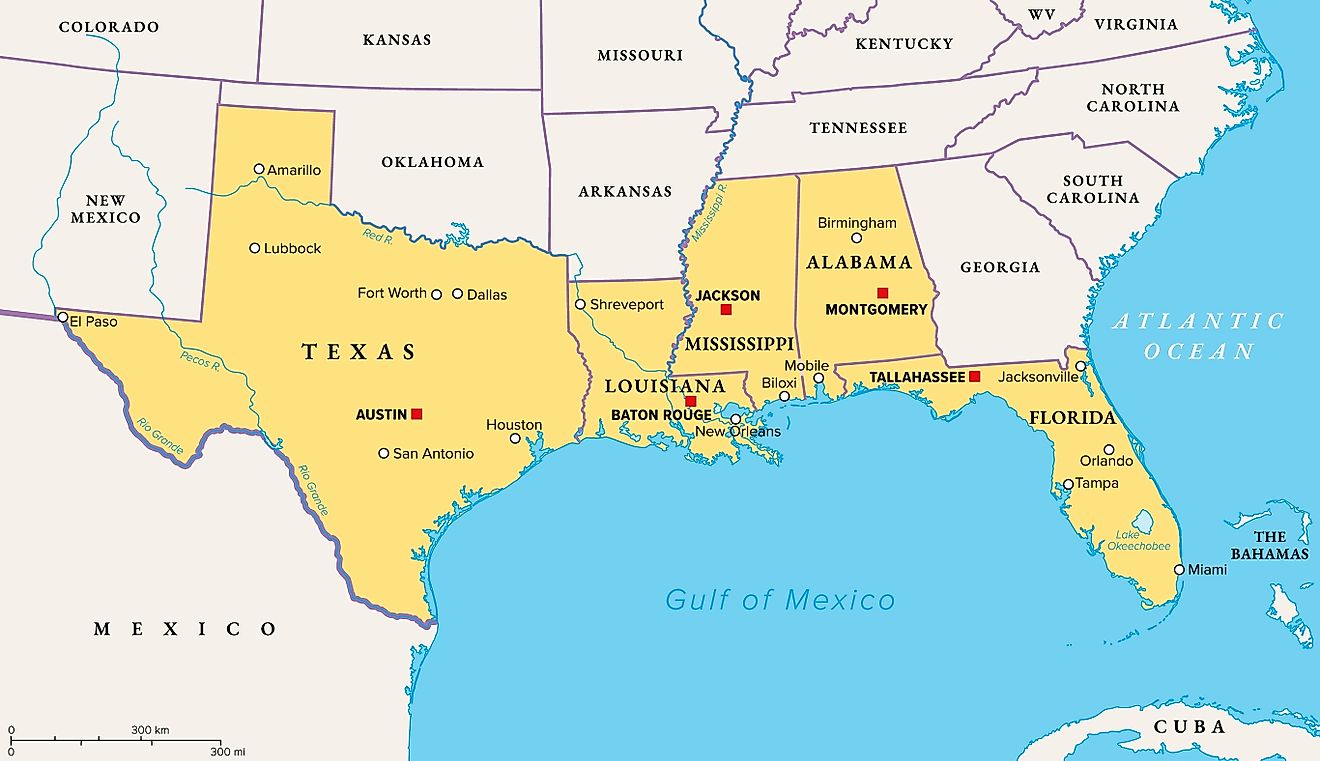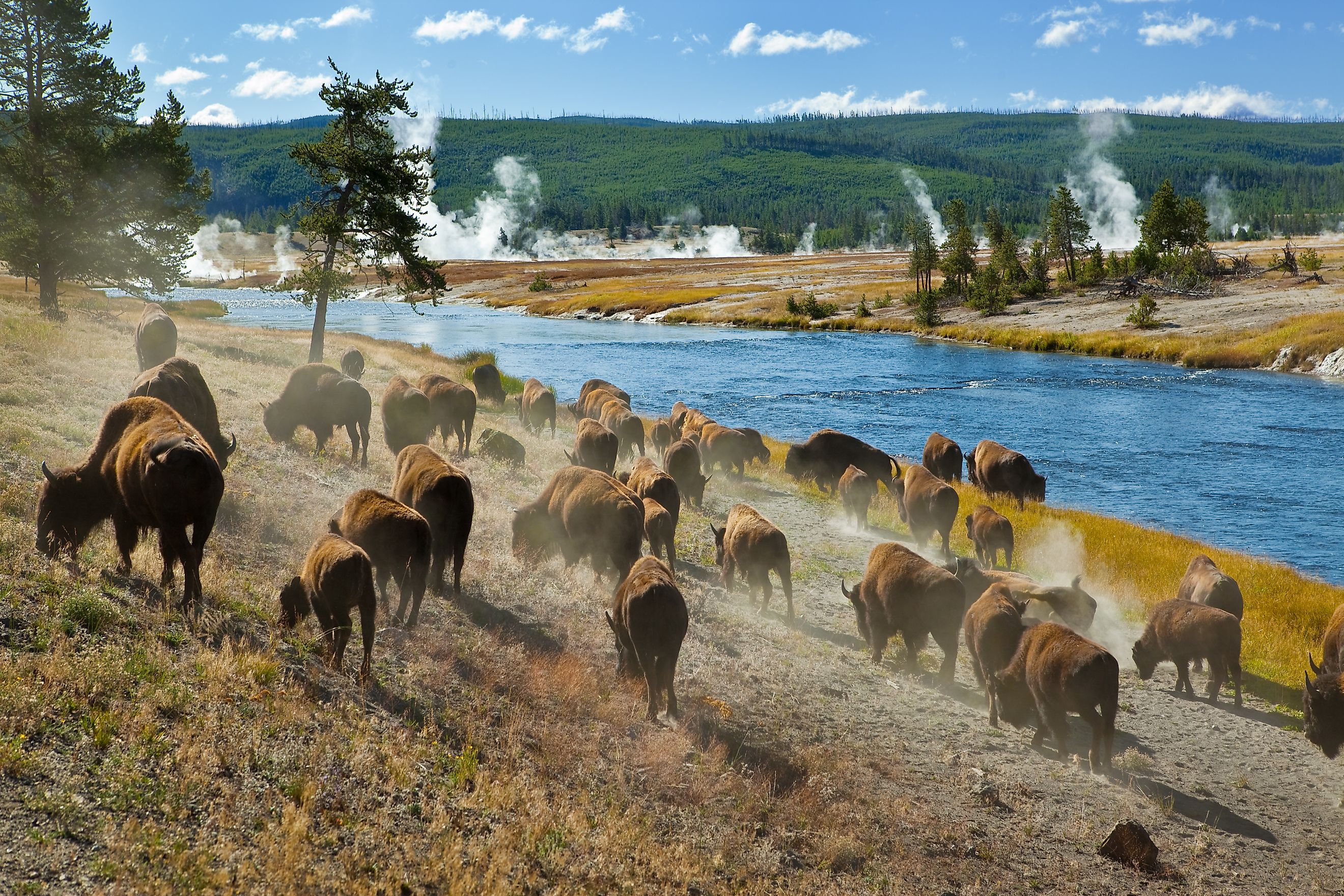
Oldest National Parks In The United States
The United States' national parks are often referred to as "America’s best idea" — and for good reason. These protected landscapes have not only preserved some of the nation's most stunning natural wonders but also laid the groundwork for a global conservation movement that continues to influence environmental stewardship worldwide. Born from a revolutionary idea to protect nature for future generations, the national parks symbolize both America's wild beauty and its evolving relationship with the land.
While today there are over 400 units managed by the National Park Service, it all began with a few historic parks set aside for their extraordinary beauty, cultural significance, and ecological value. These pioneering parks paved the way for a system that millions of people now explore, cherish, and fight to protect.
Journey through the oldest national parks in the US, from Yellowstone’s otherworldly geysers to the ancient sequoias of California, uncovering their rich histories, unique features, and the enduring reasons they continue to captivate and inspire visitors from around the world.
Yellowstone National Park (Wyoming-Montana-Idaho)
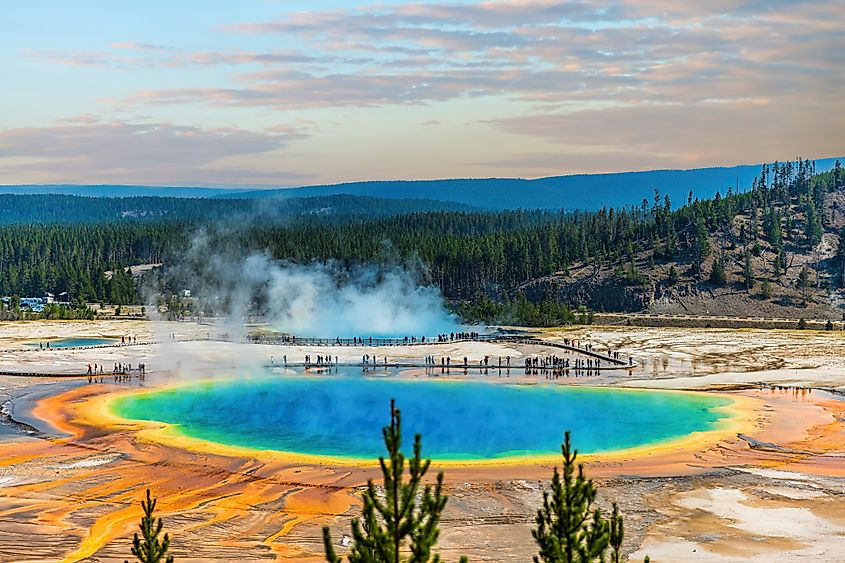
Grand Prismatic Spring at Yellowstone National Park.
Founded on March 1st, 1872. Predominantly located in Wyoming, Yellowstone boasts alpine rivers, hot springs, erupting geysers, magnificent canyons, and lush forests teeming with wildlife, including bears, ungulates, bison, birds, and wolves. Beyond its geothermal marvels, Yellowstone is home to the vast Yellowstone Caldera, one of the largest active volcanic systems on Earth. The park's historic lodges and scenic byways, like the Grand Loop Road, offer visitors easy access to iconic sights. Each season brings a new face to Yellowstone, from snow-dusted landscapes in winter to wildflower meadows in summer.
Sequoia National Park (California)

Walking Amongst Giants.
Sequoia National Park was established on September 25th, 1890, renowned for its colossal trees, diverse flora, and fauna. Visitors engage in outdoor activities such as hiking and camping, often encountering bears along the way. The park’s Giant Forest is home to five of the 10 largest trees on Earth by volume, including the General Sherman Tree. High-elevation trails lead to panoramic views of the Sierra Nevada, while underground, visitors can explore the marble wonders of Crystal Cave. Sequoia’s rich biodiversity includes species found nowhere else on Earth, thriving in its varied ecosystems.
Yosemite National Park (California)
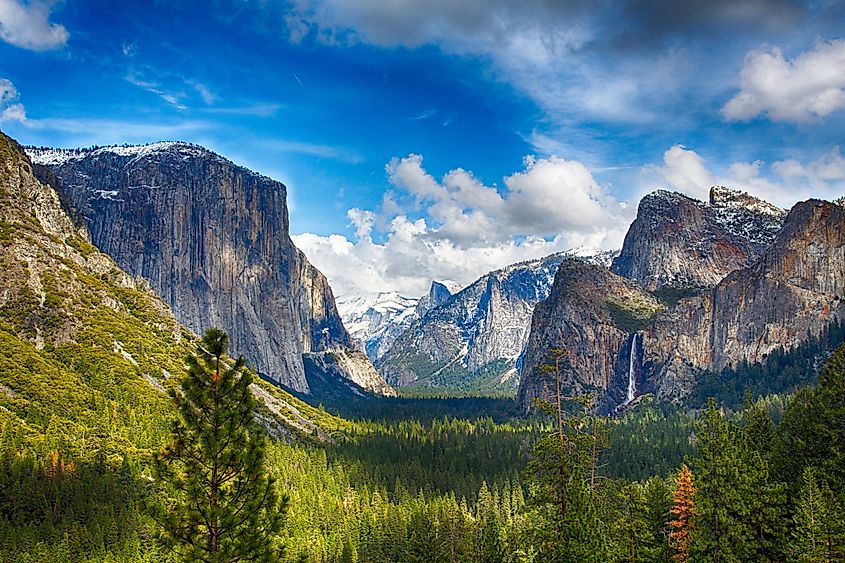
The view of the Yosemite Valley from the tunnel entrance to the Valley. Yosemite National Park, California.
Established on October 1st, 1890, Yosemite is located within the Sierra Nevada Mountains. Its breathtaking waterfalls, rivers, streams, rock formations, granite cliffs, and panoramic views contribute to its unparalleled beauty. Wildlife here includes bears and various small mammals. Yosemite Valley alone draws millions each year, thanks to landmarks like El Capitan and Bridalveil Fall. Beyond the crowds, the park’s vast wilderness offers backcountry adventures in areas like Tuolumne Meadows and the High Sierra. The park’s deep ties to conservationist John Muir helped ignite the broader environmental movement across the United States.
Mount Rainier National Park (Washington)
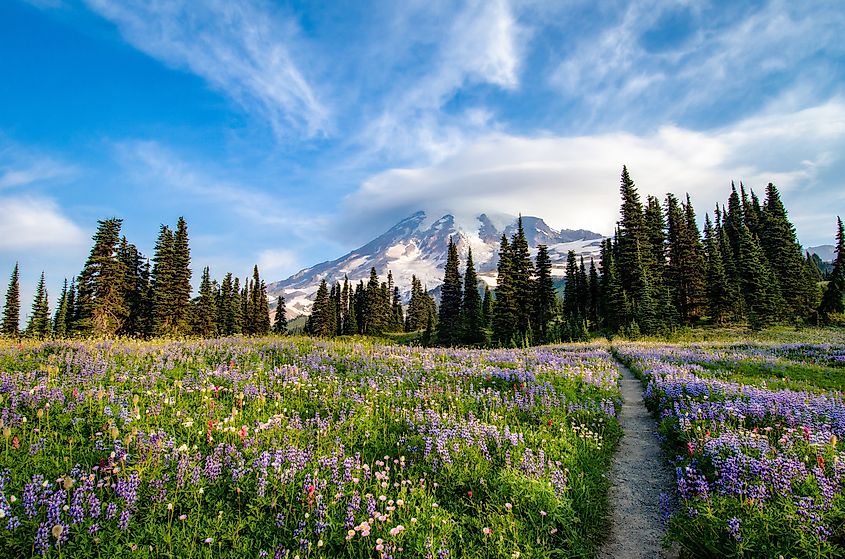
Founded on March 2nd, 1899, Mount Rainier stands as the most glaciated park in the US. Snow-capped peaks, volcanoes, flower-filled meadows, extensive hiking trails, and sweeping vistas make it an ideal destination for outdoor enthusiasts. The 93-mile Wonderland Trail encircles Mount Rainier, offering one of the most challenging and scenic backpacking trips in the country. In summer, fields of wildflowers blanket the park's Paradise area, creating one of the most stunning alpine displays in North America. Mount Rainier also poses a reminder of the region's volcanic activity, as it remains an active stratovolcano.
Crater Lake National Park (Oregon)
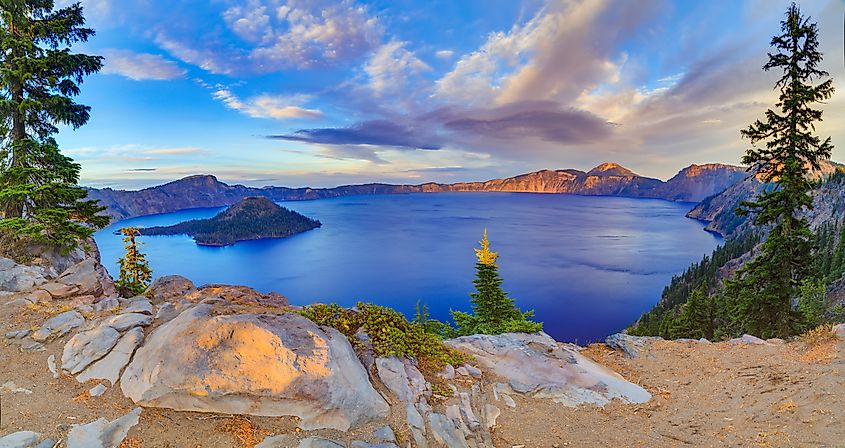
Crater Lake National Park in autumn, Oregon.
Established on May 22nd, 1902, Crater Lake harbors the deepest lake in the US, revered as a spiritual site by Native American tribes. Visitors can explore old-growth forests surrounding the pristine waters. The park’s Rim Drive, a 33-mile scenic loop, offers jaw-dropping views of the lake’s vivid blue waters from dozens of overlooks. Wizard Island, a volcanic cinder cone rising from the lake, can be visited by boat during the summer months. Crater Lake’s intense blue color and remarkable clarity are a result of its depth and the purity of rain and snow-fed waters.
Wind Cave National Park (South Dakota)
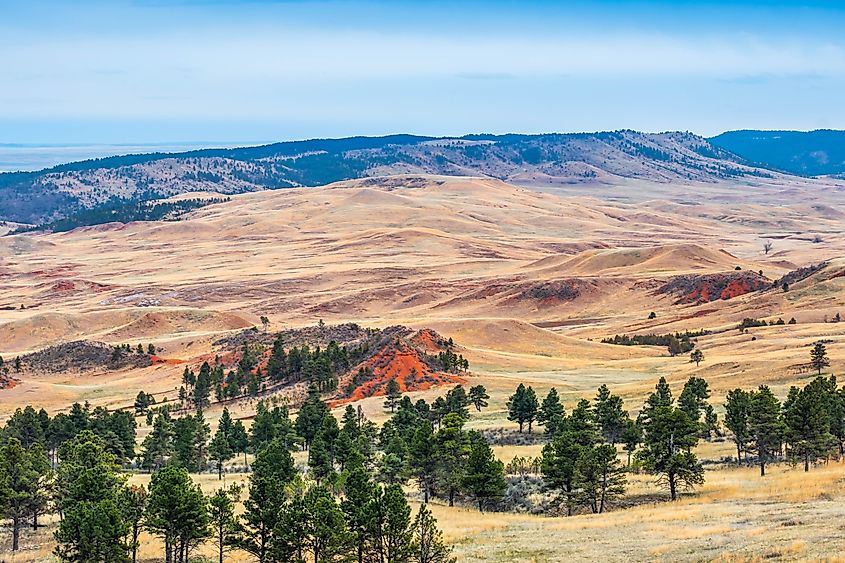
A beautiful overlooking view of nature in Wind Cave National Park, South Dakota.
Designated on January 9th, 1903, Wind Cave offers exploration of one of the world's longest caves, spanning 142.75 miles. Its vast prairie lands are home to bison herds. Wind Cave is renowned for its unique "boxwork" formations — thin honeycomb-like calcite structures rarely found elsewhere. Above ground, the park transitions into a vast mixed-grass prairie ecosystem, providing a critical habitat for prairie dogs, elk, and endangered black-footed ferrets. Guided cave tours reveal an eerie, ancient underground world that feels entirely separate from the grassy landscape above.
Mesa Verde National Park (Colorado)
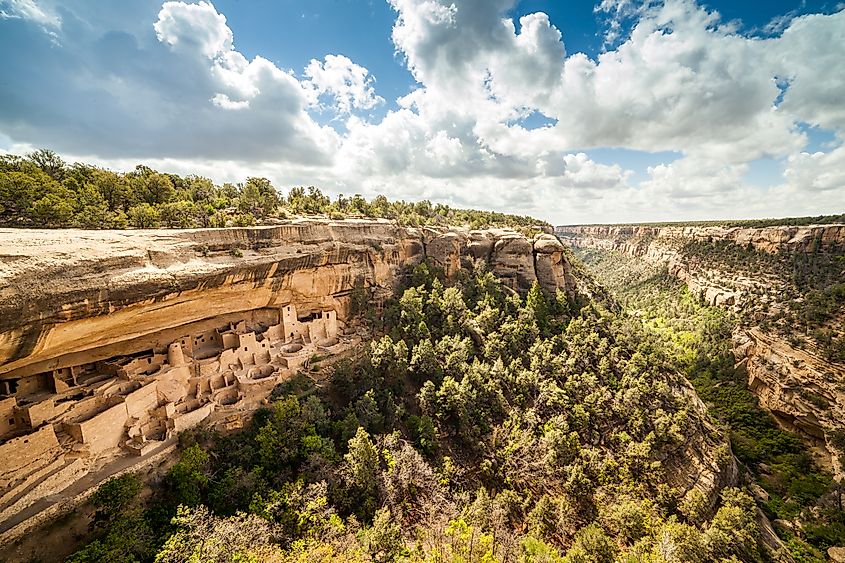
Cliff dwellings in Mesa Verde National Parks, Colorado.
Established on June 29th, 1906, Mesa Verde showcases ancestral cliff dwellings of the Pueblo Indians dating from the 6th to the 12th century, boasting well-preserved structures and artifacts. The park protects over 600 cliff dwellings and nearly 5,000 archaeological sites, making it one of the most significant cultural preserves in North America. Balcony House, Cliff Palace, and Spruce Tree House offer glimpses into the sophisticated architecture and society of ancient peoples. Visitors today can walk the same pathways once used by the Ancestral Puebloans centuries ago.
Glacier National Park (Montana)
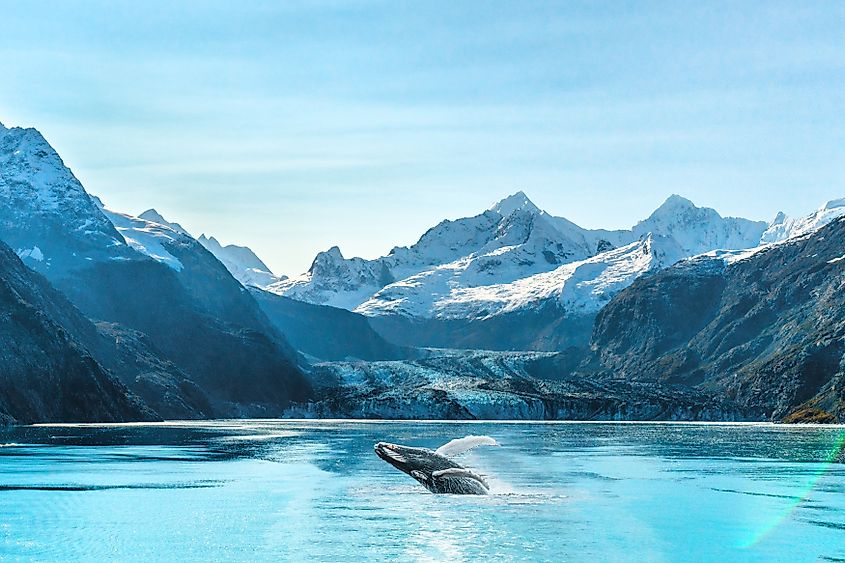
Founded on May 11th, 1910, Glacier National Park features a 700-mile hiking trail offering encounters with mountain goats and bears. Camping, cycling, and backpacking are popular activities. The park’s iconic Going-to-the-Sun Road, a 50-mile engineering marvel, offers panoramic views of rugged peaks and glacial valleys. Sadly, many of the park's namesake glaciers are rapidly retreating due to climate change, adding urgency to efforts to preserve its fragile ecosystem. Glacier's vast wilderness connects to Canada's Waterton Lakes National Park, forming the world's first International Peace Park.
Rocky Mountain National Park (Colorado)
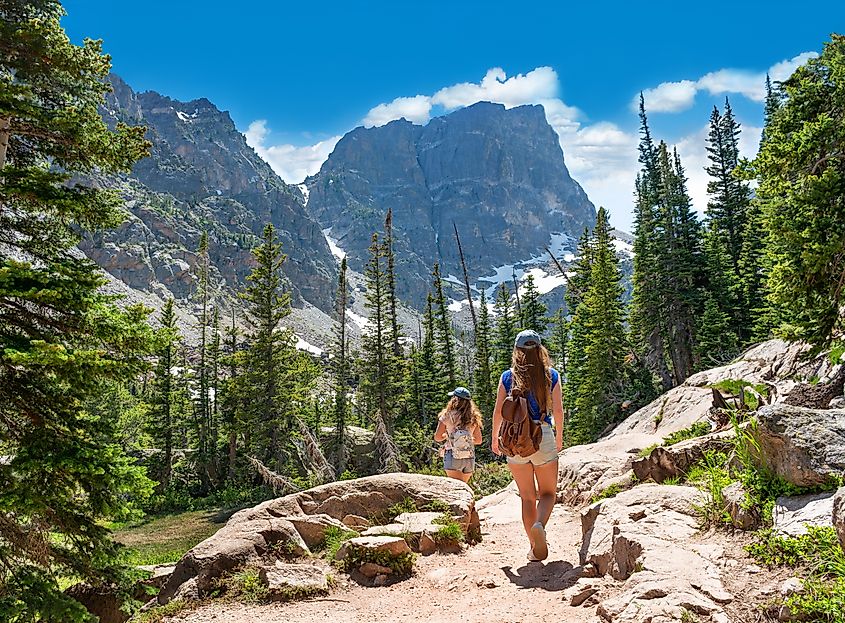
Established on January 26th, 1915, Rocky Mountain National Park boasts over 100 peaks above 11,000 feet, with the highest towering at 14,259 feet. Elk and deer are common sights amidst its diverse wildlife. Trail Ridge Road, the highest continuous paved road in North America, crosses the park and offers breathtaking views from above the treeline. In autumn, the park is famous for its elk rut, when bugling echoes through the valleys as males compete for mates. Rocky Mountain’s alpine tundra ecosystem provides a rare glimpse into one of the harshest, yet most beautiful, natural environments in the country.
Haleakala National Park (Hawaii)
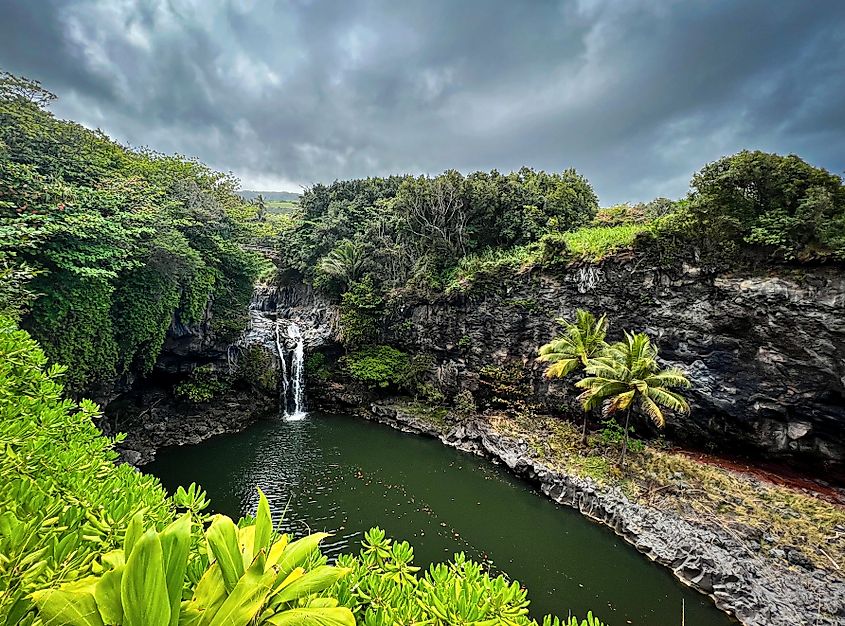
Established on August 1st, 1916, Haleakalā offers a volcanic landscape, bamboo forests, and immersive Hawaiian cultural experiences. Lucky visitors may spot the island's rare endemic bird, though human services are scarce. Permitted activities include hiking and swimming. At sunrise, visitors gather at Haleakalā’s summit to witness one of the most breathtaking spectacles in the world — a sea of clouds bathed in early morning light. The Kipahulu District, accessible by the famed Road to Hana, reveals waterfalls, freshwater pools, and lush rainforests. Haleakalā also plays a critical role in preserving native Hawaiian ecosystems and ancient cultural sites.
The National Park Service
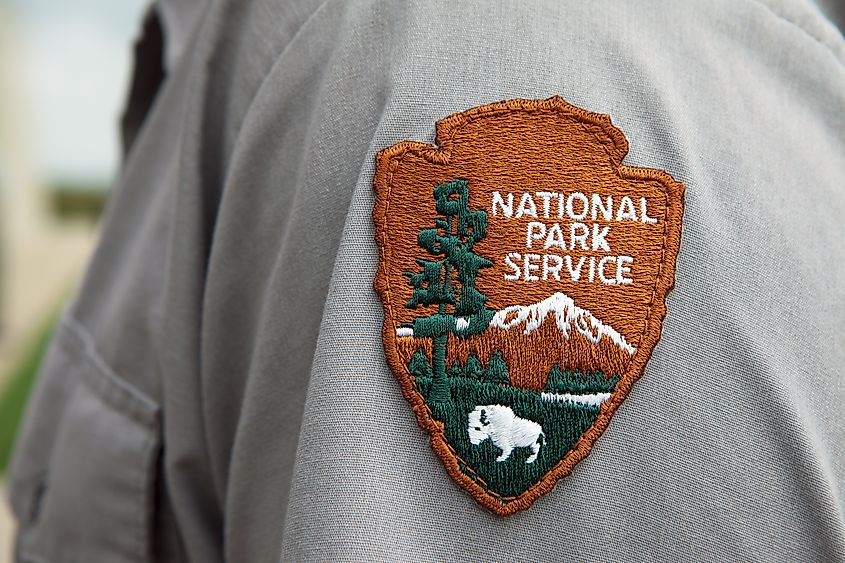
The National Park Service stands as the most ancient uniformed entity within the United States Department of the Interior. Established on August 25, 1916, by a decree of the US Congress, its mandate encompasses the stewardship of all national parks and monuments across the nation. Its primary mission revolves around safeguarding and conserving the historical and ecological significance of these natural havens, while simultaneously extending a warm invitation to the public, encouraging them to savor and treasure these pristine landscapes. Celebrating its centennial in 2016, the agency marks a century of dedicated service.
The 10 Oldest National Parks In The US
| Rank | National Park, Location | Date Established |
|---|---|---|
| 1 | Yellowstone, Wyoming-Montana-Idaho | March 1st, 1872 |
| 2 | Sequoia, California | September 25th, 1890 |
| 3 | Yosemite, California | October 1st, 1890 |
| 4 | Mount Rainier, Washington | March 2nd, 1899 |
| 5 | Crater Lake, Oregon | May 22nd, 1902 |
| 6 | Wind Cave, South Dakota | January 9th, 1903 |
| 7 | Mesa Verde, Colorado | June 29th, 1906 |
| 8 | Glacier, Montana | May 11th, 1910 |
| 9 | Rocky Mountain, Colorado | January 26th, 1915 |
| 10 | Haleakala, Hawaii | August 1st, 1916 |
